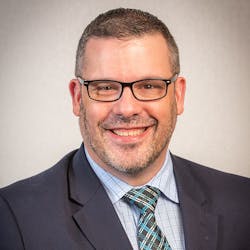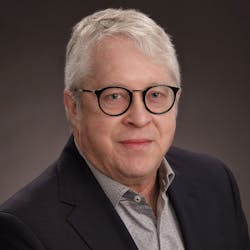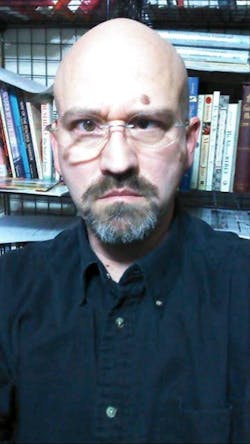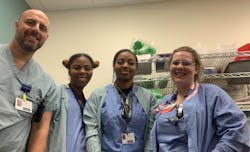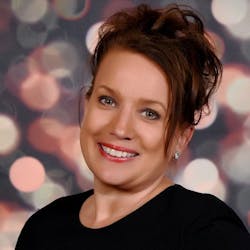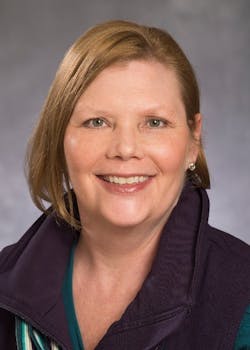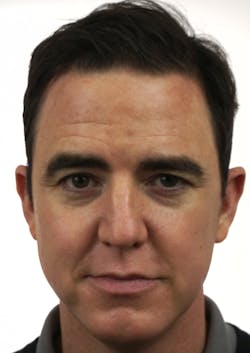Updated ANSI/AAMI ST91: progress to date and challenges faced one year later
March 2023 marks one year since the final ANSI/AAMI ST91:2021, flexible and semi-rigid endoscope processing in healthcare facilities was published. The updated standard is intended to serve as a “comprehensive guidance to achieve best practice for each stage of processing flexible endoscopes, as well for competency and education of staff.”
HPN reached out to the Association for the Advancement of Medical Instrumentation (AAMI), Healthcare Sterile Processing Association (HSPA), Central Sterile Supply Department (CSSD) professionals, and reprocessing product and solutions providers to gain their insights on whether scope-processing teams have made progress in meeting the ANSI/AAMI ST91:2021 standard over the past 12 months, and if not, factors holding them back.
A look back: shaping the standards
This standard was developed by the AAMI Endoscope Reprocessing Working Group under the auspices of the AAMI Sterilization Standards Committee. The Group included 150+ main and alternate members representing healthcare organizations, industry associations, and product and service/solutions suppliers, among others.
“Since ANSI/AAMI ST91 was first published in 2015, HSPA has been at the table with all the stakeholders from industry partners, regulatory agencies, clinical end users, and experts in reprocessing these complex devices. Both Susan (Sue) Klacik, HSPA clinical educator, and I were active participants with the main goal of not only representing the association, but also giving valued input on the real-world workflows and conditions in our departments around the country.”
Workflows and physical space
ANSI/AAMI ST91:2021 section 4.2 offers recommendations around the physical space for scope-processing workflows, including how facilities should have two separate rooms for processing endoscopes.
The standards’ authors acknowledge the challenge of this recommendation given not all facilities can immediately proceed with a renovation or rebuild. In these cases, the facilities should put into place strict unidirectional processing procedures to reduce cross-contamination risks.
“The most difficult challenge I am seeing out there, particularly in older, smaller facilities, is finding the space to make changes, particularly to expand reprocessing areas to allow for a barrier between dirty and clean,” said Doug Brown, director of sales & marketing, Torvan Medical. “The other is finding the space to install the cabinets for endoscope storage, which can no longer be placed in procedure rooms and other open areas. The other age-old challenge is finding the budget dollars to make these changes.”
“Our scope reprocessing space is the size of a galley kitchen in a motorhome,” Potratz explained.
He noted the challenges of adding additional equipment to such a small space.
“We do have a good HEPA storage cabinet outside of the endo suite, but no room for a drying cabinet within our endo suite reprocessing space. If we were to purchase a borescope, I’m not sure where I would use it. We have a small, but deep, kitchen-sized pair of sinks. I would have to take the scope out of the sink and put it on a table (which I don’t have) to inspect it with the borescope.”
“There is no scalability in healthcare,” he added. “A tiny hospital can’t use the same standards as the Mayo clinic. But with our current equipment and processes, following the scope-manufacturer instructions for use (IFUs), our scopes come out clean and sterilized and pass the verification tests.”
“It’sbeen challenging for customers who are not undergoing renovations, but simply upgrading their department, to ‘reconfigure’ their equipment and workflow to accommodate the physical separation requirements where space constraints are evident,” said Randalyn Walters, national clinical education manager, Belimed. “Incorporating traffic-control patterns into your training, policies/procedures, and even standard work instructions, can help reprocessors navigate these changes and adhere to best practices.”
Walters consulted on a recent project where a customer had incorporated pass-through automated endoscope reprocessors (AER) into the design of their new scope-reprocessing space but did not account for manual disinfection practices outside of decontamination.
She commented on the solution, “We were able to revamp their design to incorporate an additional sink for rinsing and manual practices, support a fully uni-directional workflow, incorporate a pass-through workflow for automated reprocessing and a dedicated drying area, something they never had before.”
Froedtert Lutheran in Milwaukee had the good fortune to be drafting blueprints for a new endoscopy department, with the help of Pure Processing, that would include flexible scope reprocessing at the time when ANSI/AAMI ST91:2021 was published.
“We had known the standard was coming, so upon its release, I called our director right away,” said Schroeder. “We purchased the standard and took about a week to read and interpret it. Then, we met with our sister hospitals to get their impressions. We had the opportunity to say, ‘this is what we are capable of doing now, and this is what we will be able to do moving forward.’”
Visual inspection
ANSI/AAMI ST91:2021 section 7.8 on visual inspection recommends lighted magnification be used to inspect endoscopes and accessories, noting how “a borescope can be used periodically to inspect the accessible channels of flexible endoscopes at a frequency determined by the facility.”
Borescope inspection was a hot-button issue among those interviewed for this article, particularly the cost of the device, its effectiveness, and the time inspection adds to scope-reprocessing times.
“A borescope is a great tool, but it does makes things a little more complex,” said Jake McHugh, CRCST, CIS, CHL, CER, process improvement auditor, Agiliti. “And they can be very expensive to purchase.”
“If we had borescopes, the issues would be where to put the visualization station, and keeping up with the GI doc's workflow,” said Potratz. “I agree they are a very useful product, but the way they are described as being used between every patient is not going to work, not unless you have more scopes and more employees so you can keep your turnaround time down.”
Potratz did the math on adding borescope inspection to his current workflow. “We currently process 12 scopes at 30 minutes per case for a total of six hours. Now, add an additional amount of time to borescope between each case, and suddenly getting done with 12 scopes in eight hours becomes an issue.”
“The borescope is so new that people really haven’t found the best way to utilize it in their current processes,” McHugh commented. “The question is: at what stage do you use the borescope to do your flexible-endoscope inspection? You can use it on the dirty side [in decontamination], but if your scope is still wet, it can be hard to see through it. If you inspect a flexible scope after it has been through high-level disinfection (HLD) and dried, you are contaminating your scope. You can use it on a rotational basis, but then you need to reprocess the flexible scope you just checked.”
Froedtert Lutheran’s new endoscopy department will have a designated space for scope inspection using borescopes to minimize the risk for cross contamination.
Schroeder explained, “That way we are not dealing with a technician using a borescope and then grabbing another soiled scope to inspect. We will have someone set aside to do that inspection and cleaning verification testing. That will also help us keep that workflow going without bottle-necking.”
Cleaning verification
ANSI/AAMI ST91:2021 section 7.8 recommends cleaning verification of high-risk endoscopes after each use. Endoscopes not determined to be high-risk should undergo cleaning verification tests at intervals established by the facility.
While some voiced the challenges to adding this level of cleaning verification to the endoscope reprocessing workflow, Adventist HealthCare Shady Grove Medical Center Sterile Processing Manager, Sharon Greene-Golden, CRCST, CER, SME, FCS, who is the keynote speaker at the 2023 HSPA Annual Conference in Nashville, emphasized why this time and effort are well-spent.
“The verification doesn't take that long, and when you look at the quality it brings to your cleaning process, it's priceless. Do you want the scope they didn't clean going down your throat? The ATP verification allows us to know the scope was cleaned at the end of the manual process. So, we feel confident about our scopes being clean and then high-level disinfected (because they were clean when we put them into the machine).”
“Technicians will tell me, ‘If the scope fails, then it needs to be cleaned again, and we don’t have the time and staff to do that.’ I explain how consistent documentation of verification fails holds tremendous value to guide improvements because they allow you to uncover patterns and trends in cleaning failures. Is it a tech that needs more training or education? Or is a specific model of a scope or a specific scope that can’t be adequately cleaned?”
For CSSD teams that lack staff resources for compliance with the ANSI/AAMI ST91:2021 recommendations, Swails encourages them to leverage documented data on scope use and processing to make the case for additional investments in their departments.
She stated, “If it takes longer to process scopes with the new recommended dry times and cleaning verification—for instance you can only process 25 scopes per day when you used to be able to process 30—there is your proof to leadership that you need more staff.”
Sterilization
ANSI/AAMI ST91:2021 section 8.3 states, “Evidence supports sterilization (instead of HLD) of all flexible endoscopes, including those used in both semi-critical and critical procedures.”
“Successfully sterilized endoscopes can provide an increased safety margin over high-level disinfected endoscopes,” noted Stacy Johnson, APRN, CNS, CNOR, CCSVP, clinical education consultant, ASP. “Terminally sterilized endoscopes are rendered completely dry, packaged (which reduces the chance of contamination for longer periods of time), and are patient-ready. Packaged endoscopes have tamper-evident seals that clearly distinguish ‘used’ endoscopes from 'patient-ready' endoscopes.”
“Increasingly, specialty services such as urology are considering transition to sterilization,” Johnson added. “One manufacturer’s voluntary recall, urgent field safety notice, and subsequent FDA instruction to discontinue all high-level disinfection methods for affected urological endoscopes, created immediate attention to this practice transition for some providers.”
"CSSD staff should review the IFUs to determine which of their scopes can be sterilized instead of disinfected, as FDA is moving the industry from disinfection to sterilization for safer outcomes," said Case Medical Marketing Director, Richard Riley. "They can post wall charts, even use software to guide them through each critical step."
But transitioning from HLD to sterilization is not a change that can happen overnight.
“We are still transitioning some of those high-risk scopes to sterilization,” said Schroeder. “It is not a fast process. It must be done systematically, and we must prove we have the sterilizer capacity to support the increased volume.”
To help facilitate the transition, Johnson recommends the facility perform a risk assessment to help identify processing methods. She noted how the Association of periOperative Registered Nurses (AORN) updated "Guideline for Processing Flexible Endoscopes” provides new recommendations on important considerations for processing method selection.
“One new recommendation identifies that endoscopes should be processed using the same approach in all locations and on all shifts,” said Johnson. “Changing processing method from high-level disinfection to terminal sterilization may require allocation of space for a new sterilizer, implementation and storage of sterilization packaging, chemical indicators, and training staff to new procedures.”
10-minute dry time
ANSI/AAMI ST91:2021 section 8.2.5 recommends flexible endoscopes with channels should be dried for a minimum of 10-minutes with pressure-regulated forced instrument air or a minimum of HEPA-filtered air.
“A lot of facilities think their automated endoscope reprocessor (AER) has an air purge or extended drying phase. While those help, they don’t meet the new standards,” said McHugh. “You need to apply 10 minutes of manual or instrument HEPA filtered air, or you can use drying cabinets that include all the necessary channel hookups. Those cabinets are expensive, but they are nice because they save so much time. You just need to wipe the excess water off the exterior of the scope, pop it in the drying cabinet, and walk away.”
“In our specific areas of interest, endoscope storage and reprocessing, there were a lot of facilities already making changes prior to the release of ST91-2021,” Brown noted. “Many hospitals had already upgraded their endoscope storage cabinets to HEPA ventilated and channel-purge drying. The same can be said for endoscope reprocessing, for those facilities who were doing it in the same room.”
In her visits to 50-75 facilities each year across the U.S. and Canada, Swails has seen scope-processing teams employ various methodologies to achieve the 10-minute scope drying time.
“I have seen CSSDs bring in tanks with instrument air, but I warn them to carefully control the PSI, and dry according to the manufacturer’s IFU so they don’t blow the scope because different scopes have different PSI limits. Other facilities are working to get air piped in, which is even better, but keep in mind how many hook-ups you need, based on the number of AERs you have.”
McHugh said he has seen retrofitted systems that bolt onto the back of older-style cabinets with connected hoses turning the conventional cabinet into a channel-drying cabinet. He has also seen tabletop units with circulated air flowing through them that technicians can use to dry the scope channels.
POU handling and communication
ANSI/AAMI ST91:2021 section 7.2 cites the importance of point of use (POU) treatment in the prevention of bioburden build-up, biofilm development, and drying of secretions.
McHugh commented on the changes to POU cleaning in the updated standard. “The terminology has been changed from ‘precleaning’ to ‘POU treatment,’ which covers precleaning the scope, disposal of all single-use items, and documenting handoff information. This helps the scope-cleaning technician identify not only where, when, and which patient the flexible scope was used on, but also when the pretreatment happened. If there is a delay or failure in POU treatment, the endoscope should be processed using delayed-processing protocols described in the device manufacturer’s instructions for use (IFU).”
“Although delayed-processing protocols existed before, they are really being emphasized now,” he added.
In her experience working with healthcare facilities, Swails said this information related to time of POU treatment doesn’t always get communicated to the decontamination team. “I have seen procedural staff write the time of POU on a sticky note or on a disposable scope container, but sometimes you can’t read the writing or they forget to write it or the sticky note gets lost as the scope is transported to decontam.”
"When it comes to documentation, ‘If it isn’t documented, it didn’t happen,’” she added. “If the decontam staff doesn’t know that the scope sat there uncleaned, they will process it normally, as opposed to the required delayed-processing protocols in accordance with the manufacturer’s IFU and ANSI/AAMI ST91. With an electronic documentation system, it takes the procedural staff only five seconds to document POU cleaning. In turn, the CSSD can reference this information upon the scope’s arrival in decontam, and proceed with the proper protocols.”
A look ahead: tips for navigating change
“What ST91-2021 has done is validate the decision by those facilities that upgraded prior to its release,” Brown commented. “It has also made those facilities that have not made changes to start looking to do so, of which a large number have already done or are now planning.”
Brown and others offer their advice on how to navigate the path forward.
Make education the priority
“Some of these key changes will impact the real-time processing with updates to leak testing, borescope inspection, visual inspection, cleaning verification, and drying, to name a few, and what is a ‘should’ requirement versus a ‘shall’ requirement,” said Berg. “The big takeaway from the new standard is that all training is key to success, and performing a risk assessment prior to purchasing or implementing new practices so that the end user fully understands the impact and workflow.”
There appears to be some confusion regarding which elements are required for conforming to the voluntary consensus standard and which are recommendations. This is centered around the terms “shall” and “should” respectively. ANSI/AAMI ST91:2021 describes this distinction for readers, along with other related language in the published standard:
- “shall” and “shall not” are used to express requirements
- “should” and “should not” are used to express recommendations
- “may” and “may not” are used to express permission
- “can” and “cannot” are used as statements of possibility or capability
- “might” and “might not” are used to express possibility
- “must” is used for external constraints or obligations defined outside the document
- “must” is not an alternative for “shall”
For example, some of the language surrounding borescopes, is “can,” recognizing that not every facility needs such a device.
Barker said the endo suite technicians he consults with currently have "limited to no access" to ANSI/AAMI ST91:2021. This presents a much larger, more important issue for the industry—gaps in flexible-endoscope reprocessing education and training. Berg commented on HSPA’s efforts to make improvement in these areas.
“HSPA will continue to advocate for our members by participating in these standards, and as new standards are released or updated, we will inform our members through our publications, and we will continue to present at local, state and national meetings so we can help the SP professionals adjust to these important changes.”
“Take every opportunity to increase knowledge by attending educational programs and reading industry publications that provide an even more-efficient way of processing flexible endoscopes,” advised Barker.
Greene-Golden commented on how certification should be the top priority. “Instead of being worried about whether you have a borescope, start with the first rule: getting your people certified. Because if they are certified, at least they understand the process, and you can perhaps depend on them to ensure they follow it, and the scopes are clean.”
Greene-Golden updated the job descriptions for those reprocessing flexible scopes in her facility to include the requirement of not only Certified Registered Central Service Technician (CRCST) certification, but also Certified Endoscope Reprocessor (CFER) certification. She purchased CFER exam books and gave the current scope reprocessors six months to study and take the certification exam.
As a facility that uses high-risk endoscopes, Froedtert Lutheran in Milwaukee has prioritized technician training, as Schroeder explained.
“We stepped up training so technicians would better understand how scope processing is not a one-size-fits-all. We specifically called out high-risk scopes and what is required of them. We are developing written instruction on how to be ST91-compliant in the working environment, which helps to maintain consistency and ease uncertainty about practices. And we have had to revise current and develop new standard operating procedures (SOP) to help bring our team up to speed.”
Advocate for change with facts, not fiction
“When I hear 'they won't buy it for me' my question back is 'did you ask?"', questioned Greene-Golden, when it comes to securing resources from leadership for new equipment to align with the updated standard. "Did you go to the C-suite with facts not fiction? It is all in how you present it. If you present it as garbage, they receive it as garbage. He who fails to plan, plans to fail.”
She described her approach, "I came back from the 2022 HSPA Annual Conference, read ANSI/AAMI ST91:2021, and commenced to ask my C-suite and director, ‘Are we a standard-complying hospital?' They said, 'Yes, we follow the rules, we do the right thing.’ So, I showed them the changes in the ST91:2021, which I highlighted in the standard and told them what we needed.”
"Read the standard, understand it, be ready to answer questions," Greene-Golden advised. "When I approached the C-suite to make the case for resources to support the standard, I had already played the scenario of 10,000-questions and was ready to answer them.”
Greene-Golden also enlisted the support of her facility's infection control practitioner, and leveraged published studies from researchers, including Cori Ofstead.
She explained, “Take some of Cori's statistics and data to show how just one patient infection justifies the expense for new equipment. Go in prepared and say, 'We want to do the right thing. I don't want to be the reason any patient had a bad outcome because we didn't want to spend money to follow the standard.’”
Start small and share your successes
It is unrealistic to think facilities can make all the changes overnight, especially those with limited space, funding and staff resources.
As Schroeder pointed out, more significant and costly change—such as purchasing additional sterilizers—requires a greater amount of advocating and planning to gain buy-in from the C-suite. So, start small instead. “Focus on those smaller things you can do now, in a month’s time, in two months’ time, to start getting some of that compliance rolled out.”
As they wait for their new endoscopy department to open, Schroeder and her team have looked for things they can change immediately in their current reprocessing area to demonstrate compliance with the new standard. For example, they transitioned leak testing from 30 seconds to 60 seconds, implementing a tester that features a timer to help technicians comply.
Schroeder recommends facilities develop talking points for The Joint Commission (TJC), so they are prepared to share their progress, no matter how small in scope, during a survey.
“When we meet with surveyors and they ask what we have done to comply, we can share with them some of those smaller accomplishments,” she said. “Then we can tell them our plans for achieving those bigger tasks over time.”
Greene-Golden said, "Even if you are not a rich hospital system, if you can get the C-suite to understand why they wouldn't want to undergo an endoscopic procedure in a facility that doesn't comply with the standard they will get you what you need. But that doesn't mean you will get everything you want on day one. What's important is to work toward the standard. Be a part of the change team, not the complaint team."
The first piece of equipment Greene-Golden acquired for her team was an ATP system, supported by the supplier through in-servicing and training. Next, she went "borescope shopping" to find one they could afford, and worked out arrangements to pay for it. She noted how her facility did not have drying cabinets when they first began implementation of the new standard, so they did the best they could with the equipment they had in place.
"When the surveyors come, we can explain to them how we are waiting for a drying cabinet, but in the meantime, we are doing X, Y, and Z to thoroughly dry scopes in lieu of it (e.g., alcohol purge, air blown in, etc.)," said Greene-Golden.
She added how preparing for an accreditation survey also provides an opportunity to advocate to the C-suite what is needed to comply with ANSI/AAMI S191:2021.
"My advice is to take the standard questions that will be asked by TJC, DNV or whoever is performing the survey and present those to leadership. For example, when are you planning on purchasing and implementing a borescope? If the answer to the surveyor is within 12 months, emphasize to the C-suite how it would look if the surveyor came back in three years and you still don't have it. You may not get your borescope this month, but you will get it when faced with being written up.”
References:
1. AAMI website, https://www.aami.org/ST91#:~:text=The%20objective%20of%20ST91%20is%20to%20provide%20comprehensive,they%20are%20rendered%20safe%20for%20subsequent%20patient%20use
2. The U.S. Food and Drug Administration (FDA). UPDATE: Change in Reprocessing Methods with Certain Karl Storz Urological Endoscopes – Letter to Health Care Providers. https://www.fda.gov/medical-devices/letters-health-care-providers/update-change-reprocessing-methods-certain-karl-storz-urological-endoscopes-letter-health-care (2022)
3. AORN website, https://aornguidelines.org/guidelines/content?sectionId=173735349
4. Croke, L. (2022), Guideline for Processing Flexible Endoscopes. AORN Journal, 116: P5-P7. https://doi.org/10.1002/aorn.13773
A dedicated team for HLD gets the job done
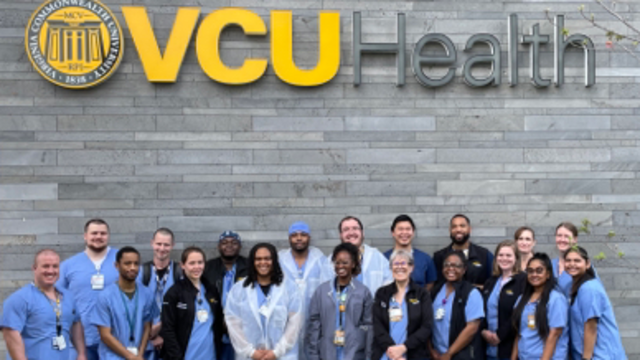
VCU Health HLD Team
Frank Daniels, MSHA, CFER, CER, AGTS, CSPDT, CSPM, director high-level disinfection & sterilization for VCU Health in Richmond, Va., described the success his facility has had by establishing a separate department (high-level disinfection) that reprocesses all flexible scopes for the hospital.
“A team trained to do a specific task will perform better than someone doing everything,” said Daniels. “Therefore, we centralized high-level disinfection (HLD) to ensure everything was being done correctly. There are many different models and manufacturers of flexible scopes that require different ways to reprocess them correctly. It takes dedicated resources to have a centralized HLD department.”
“Some places have nurses or endoscopy technicians that reprocess the scopes and tend to the patients,” Daniels continued. “However, if a flexible scope isn’t processed in time (identified in the IFUs), it takes even longer to reprocess it correctly. So, the main question is: can the current people responsible for reprocessing a flexible scope have the time to do it correctly? I can say having a dedicated department we can.”
According to Daniels, his department had been complying with most of the ANSI/AAMI ST91:2021 recommendations in the past four or five years, except for testing the high-risk scopes (they were testing a random sample of scopes and did all scopes once per month). They are now using a borescope to inspect every scope after use, and protein-test all high-risk scopes. He noted how their inventory has over 500 flexible scopes, which seems to help them keep up with the demand.

Kara Nadeau | Senior Contributing Editor
Kara Nadeau is Sterile Processing Editor for Healthcare Purchasing News.

